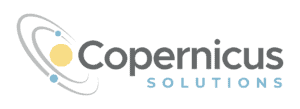Rethinking the School Day
Driving Question: How can we use our in-school time and
partnerships more wisely to accelerate learning for every student?
WHY
The COVID-19 pandemic taught us that there are many more ways to effectively organize learning for students than we were utilizing before. Returning to in-person teaching doesn’t have to mean returning to old models. Instead, we can utilize this opportunity to rethink the way we structure learning time in and out of school as well as how we partner with other organizations to more effectively utilize the time we have to accelerate the learning of all students.
This section of the PAL will offer
- A brief overview of why rethinking the school day is crucial for learning acceleration
- Models for reorganizing the school day and beyond
- Curated tips for working with partner organizations
- Links to additional resources for your review
Rethinking time and partnerships for learning acceleration
In most schools, learning has occurred using a version of the same model that has been in place since the 1920s. Students sit with age-alike peers learning the same content at the same pace under the guidance of the teacher. The COVID-19 pandemic, which made such structures almost impossible, necessitated a burst of creativity across the education sector. Teachers and schools tried a range of new models and structures for organizing student learning that often include a bold rethinking of time, grouping, and staffing models. When done well, students make rapid gains (See research here and here)
As we return to in-person learning, instead of throwing out these models and returning to previous ones, schools should consider which of these new models could be harnessed to accelerate learning. As previously stated, learning acceleration cannot happen just in the classroom. Rather, it requires a broader initiative to fully enact, complete with structures, systems, and time to learn. Savvy systems will look outside of the traditional school staff to find other partners to support this work. Research compiled by the Children’s Aid Society (see page 20) shows that well-implemented collaboration among community-based organizations, schools, and parents to provide additional support for students can directly impact student achievement. Working with community organizations, therefore, is a necessary component of effective learning acceleration.
Curated Tips for Reimagining the School Day
- It starts with leadership. Learning acceleration will only be truly successful when schools and systems find the time in the schedule to make it happen. Classroom teachers can only work within the time, structures, and resources they have within the confines of their classrooms. School and system leaders need to set the foundation of systems, structures, communication, and collaboration required for teachers to do the work. These include finding and allocating resources, getting creative about staffing, providing training, and creating time for teaming
- Try a dedicated period: In this model, the school day includes a set time during which students can access the supports they need such as tutoring, consulting with teachers, or working with specialists. Here are two examples:
- Cajon Valley Union School District created Power Hour, a schoolwide reading intervention and support program that included 30 minutes of schoolwide reading and 30 minutes of home-based reading. This accountability-based, personalized learning and reading approach ensures all students have time and support for reading learning-level and grade-level texts
- East Palo Alto Academy has a dedicated Reading Recovery teacher and a block in the day for extracurriculars or extra acceleration work. Students also take double-blocked algebra so they have time to work with teachers. The result of these interventions was a 90% graduation rate and a 90% college-going rate.
Curated Tips for Thinking Beyond the School Day
- Make use of before and after school. Sometimes extending the school day is the best option for providing the additional individualized support students need to accelerate their learning. This supplemental instruction and support guide from CCEE provides useful information about structuring this time well.
- Find a burst of time. The burst of time model aims to provide extra learning time in smaller groups without taking away from core instruction during the school day. Often, this instruction takes place during breaks and on weekends with qualified teachers using targeted instruction. Acceleration Academies used this approach during winter and spring break weeks in Lawrence, Massachusetts. In these academies, teachers work with students in small groups on hands-on learning that brings them back to school with strong skills and confidence. You can read more about this program here.
- Extend the school year. Research has long shown that summer and other extended breaks lead to learning loss. Consider how you might use summer and other breaks to personalize learning, not simply remediate or reteach information to students in a generic manner.
Curated Tips for Partnering With Community-Based Organizations (CBOs)
CCEE’s Field Guide for Accelerating Learning, Equity, and Well-Being provides detailed ideas, steps, and resources for effectively partnering with CBOs. Here are a few tips. We encourage you to visit that source for more information.
- Build from existing infrastructure and plans. Start with what had been planned for the year and adapt from there. Chances are you already had a deep network of partners. Remember: you and your community are resourceful.
- Map your existing assets. Map existing assets in your community. According to AmeriCorps’s guide, there are 10 essential steps in community asset mapping. Here are three other resources on asset mapping:
- National Center for Community Schools needs and asset mapping design packet
- Digital Promise’s asset mapping guide
- UCLA Center for Health Policy Research asset mapping guide
- Inventory needs. Create a list of highest-priority student needs (such as outreach to disconnected students, family engagement, supervision, enrichment, interviewing families about needs and tech issues, meal distribution, drop-off/pick-up) that could be supported by CBOs and afterschool providers.
- Determine the type of partnership you want. As an LEA team, think about your needs and what you are trying to accomplish specifically.
- Are you trying to move the needle on homework completion? Do you need to make sure students have access to books and are reading? Are you trying to inspire and motivate students? Are families looking for additional supports or experiences that could be provided by a CBO partner? This is a great opportunity to strengthen your connection to families and involve families in shaping the school programming.
- Given the many ways you can work with a CBO, think about what type of relationship you are looking to cultivate. On one end of the spectrum is a community school, with dedicated funding and staffing to support an integrative CBO partnership model; in between is something like the San Francisco Community Hub Initiative (a citywide, neighborhood-based strategy to support children, youth, and families during the school year, in which community hubs provide support for students in grades K-12 who are utilizing San Francisco USD’s distance learning curriculum, and prioritize children and youth with high levels of need); at the other end of the spectrum are schools that do not actively engage with outside partners. Are you in a position to scope more integrative partnerships to provide wraparound services, or are you, for example, looking to provide families with a list of community resources they can pursue? There is still significant value to partnering with CBOs even if you are not on the “community school” end of the spectrum. (And if you do decide to pursue an integrated partnership where you’ll be sharing student information, consider FERPA implications around data-sharing and standard operating procedures related to clearing any partner that may be working with students on site.)
- Leverage relationships to find a CBO partner. Conducting market analysis to find a CBO partner can feel daunting. Instead, consider revamping an existing relationship or leveraging community relationships to find organizations to support what you are trying to do.
- Do you already partner with an after-school program that is going well, and is that program willing to alter offerings to better support learning acceleration?
- Leverage the County Office of Education. Partner with your COE to make sure mental health referrals and food security options are made available to your families. Bring services to campuses as much as possible, and offer remote and community-located services as needed.
- Could a parent, teacher, or peer leader who is deeply involved in the community connect you to organizations that meet your needs?
- Does your County Office of Education have a list of service providers?
- Determine fit with potential partners. Once you narrow down your potential partner list, look into each to ensure outcomes are strong and others have had positive experiences with the organization.
- Once you’ve chosen your partner, align on a shared mission, vision, and definition of success, and work collaboratively: Research from Annenberg on strategies to avoid when establishing partnerships specifically mentions avoiding misalignment of expectations (see page 6). Align mission, vision, and definition of success. Once you’re on the same page and have started to build trust, you’ll have the rapport to share learning acceleration strategies and make full use of the CBO’s assets, experience, and perspective. You each bring a unique set of ideas to best support students’ well-being and learning outcomes.
- Communicate academic priorities, learning acceleration strategies, and grade-level standards. In order for a CBO to support learning acceleration, participants need to have a sense of what students are working on, including grade-level standards and the focus on ensuring three-quarters of students’ work is at grade level. Consider sharing the research related to learning acceleration and other resources, such as this tool from Seek Common Ground, that provide a concise overview of learning outcomes by grade level.
- Create structures for ongoing communication. Will you set up quarterly team check-ins to assess how things are going? Will the CBO partners and teachers have each other’s contact information and be able to reach out to discuss individual student needs on an ongoing basis? This is a team effort; maintaining two-way communication and being upfront about how a student is doing can all help move the needle. The Community Schools Playbook shares strategies for effective collaboration (see page 69).
- Use school leaders’ time strategically and involve team members in maintaining the CBO relationship. A principal’s time is limited. Consider having the principal invest more time in the early stage of the partnership development (e.g., vetting partners and aligning with them on vision and outcomes). Once the principal has trust in the partnership, they can feel more confident designating someone else to lead the process and avoid getting into the weeds of managing the day-to-day activities. This is a great opportunity to provide an emerging leader with a chance to gain experience by leading an impactful initiative for the school.
Additional Resources
- National Center for Community Schools: Needs Assessment Design Packet.
- EdResearch at Brown University: Leveraging Community Partnerships for Integrated National Student Support Accelerator: Student Support from Aligning Tutoring Curriculum to School Curriculum
- Partnership for the Future of Learning: What is a community school? , a 3-minute video by the
- CCEE: Summer Game Plan Series
- National Center for Community Schools: A guide on building community schools
- National Center for Community Schools: RecoveryLab: supporting students’ academic and social-emotional needs (executive summary and full report)
FEATURED RESOURCES:
- Student Support Accelerator: Aligning Tutoring Curriculum to School Curriculum
- Brown University and CRPE: Leveraging community partners for learning acceleration



